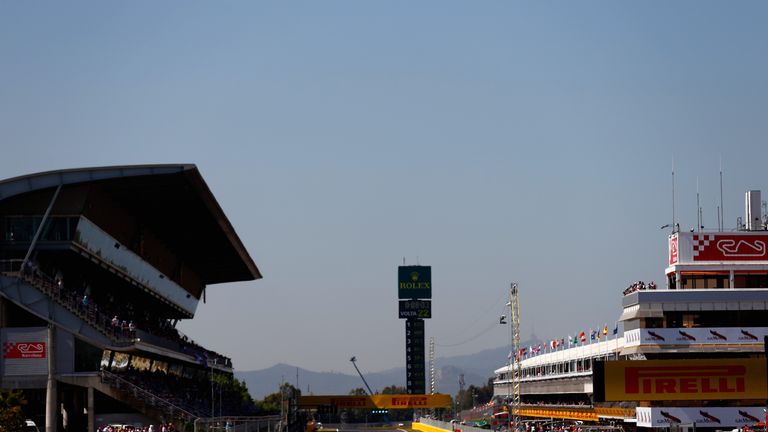Circuit de Catalunya in profile
Last Updated: 13/02/18 12:47pm

Barcelona's Circuit de Catalunya is the most familiar track in F1 for teams and drivers alike.
The traditional curtain-raiser to the European season in May, F1 has also usually visited the circuit for extensive pre-season testing and the circuit again hosts both of this year's winter sessions.
The fast, sweeping 4.655km circuit has hosted every Spanish Grand Prix since 1991 and although Fernando Alonso's popularity led to the European GP dropping anchor at Valencia's quayside between 2008 and 2012, financial problems eventually caused that race to be mothballed.
For the first decade or so, the Spanish GP was little more than a footnote on the schedules of the country's bike-mad public. But Alonso's rise changed all that and fans now flock to the circuit in massive numbers. A two-hour flight from the UK also makes it a popular weekend break for many British F1 fans too.

The venue's mix of corners makes it an ideal proving ground for new cars and the F1 adage is that any car which is fast at Barcelona will invariably be fast everywhere else.
The unfortunate consequence has, in the past, been an over-familiarity which means that, come the grand prix, teams invariably arrive with car set-ups already perfected - meaning that any performance differential is minimised.
That has occasionally resulted in processional frustration. In 1999, for instance, there was only one recorded overtaking move during the entire race. Pole position has also proved even more advantageous in Barcelona than elsewhere, although Alonso won from fifth on the grid in 2013.
The introduction of DRS zones has gone some way to boosting the chances of overtaking, with the first corner remaining the most feasible scene for a pass - although the speed cars travel through Turn One is said to be a hindrance.
Another opportunity is at the Turn 10 hairpin at the end of the back straight. The corner was modified in 2004, tightening the apex, whilst creating room to run the car wide on the exit.

Other changes have not proved so successful, however. Tasked with making the circuit more overtaking friendly, Hermann Tilke's solution was to redesign the final two corners and create a chicane to try and keep the cars closer together heading onto the pit straight.
Alas, the tweak proved both a failure and arguably a detraction from the circuit's flow, with fans since denied the sight of the cars operating at the peak of their capacity as they had previously taken the two sweeping corners flat out.
The race was for a long time short on incident but Barcelona has still proved the scene of significant moments in F1 history.
In 1996, Michael Schumacher tamed atrocious wet weather to claim his first win for Ferrari, while 20 years later Max Verstappen became the sport's youngest-ever victor when he won aged 18 on his Red Bull debut. The Dutchman triumphed after Mercedes pair Lewis Hamilton and Nico Rosberg had crashed into each other on the opening lap.






